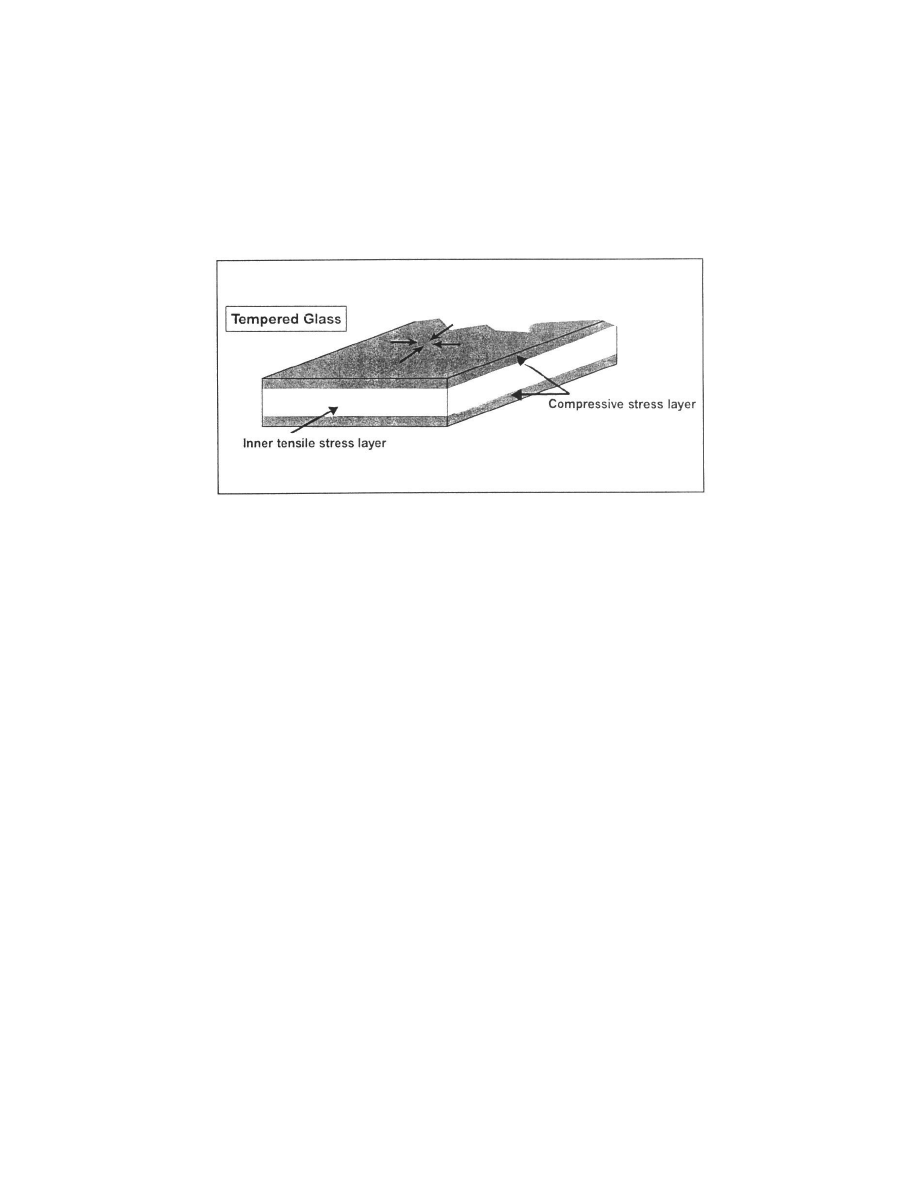Hombre S Regular Cab 4WD V6-4.3L (1999)

^
The plastic interlayer adhesion prevents the two glass layers from splitting and shattering into the cabin (resulting in occupant injuries). This ensures
undistracted driver field of vision, thus lessens possible injuries.
^
The automobile windshield (made of laminated glass) is designed to break but not shatter, will absorb the impact (lessening bodily injuries) of the
human body in the event of an accident (head-on collision) than tempered glass.
(2)
Tempered Glass**
Tempered glass consists of a tensile stress layer sandwiched between two compressive stress lavers. This three-layer glass is produced by heating a glass
plate to its softening point (approx. 700°C) and quenching it with air. Tempered glass is used in automobiles for side door windows, backlight windows,
rear quarter windows. sun-roof/moon-roof glass and other windows except the front windshield.
**Properties of Tempered Glass
^
The outer layer (compressive stress layer) of the tempered glass resists given external forces (tensile forces). This layer gives the tempered glass
three to five times impact strength than a normal glass plate of the same thickness.
^
The tempered glass will shatter into small particles (with no sharp edges) if breakage occurs to reduce possible injuries.
^
Tempered glass can resist sudden temperature changes (thermal shock).
Scenarios of Damaged Front Windshields (Laminated Glass)
Breakage in Laminated Glass
Scenario:
A crack is found on the windshield after returning to a parked vehicle.
Cause:
A small scratch on the windshield was unnoticed, which developed into a crack. This may have developed as a stress crack emanating from vehicle load
stress concentrating on the vehicle's weakest point (the windshield).
NOTE:
A flying pebble may have caused the scratch (which mainly occurs from the external surfaces of the glass.
Why cracks develop?
Cracks develop when stress is applied to the impact site. The impact site is the actual location of the outer glass layer where an object (i.e., flying pebble)
struck the windshield, chipping away a small piece of glass.
Stress is defined as:
^
Vibrations result from wind pressure while the vehicle is moving.
^
Vehicle body stress from turning and moving (i.e., rolling, pitching and yawing).
^
Thermal stress (temperature difference between interior and exterior temperatures of the vehicle).
Here is an example of a scratch caused by a flying pebble on the windshield.
PREVENTATIVE TIPS FOR WINDSHIELD CARE:
[ ] Select a parking location where the vehicle is not exposed to potential hazards from flying pebbles or gravel.
